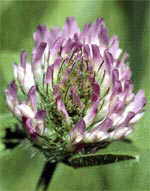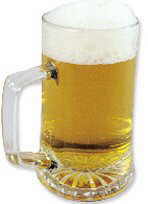|
Migraine Headache |
||||||||||||
|
||||||||||||
treat Migraine Headaches Naturally (click here) |
||||||||||||
![]()
Phytoestrogens, some
good and some bad for Exacerbation of Migraine Headache
Phytoestrogens, Naturally Occurring Plant
Estrogens, the Ones to Avoid for Migraine Relief
Just because something is
natural does not mean it is good for you or harmless. Toadstools are natural, but those mushrooms
are poisonous. migraine headaches MAY also be exacerbated by some plants, foods and herbs. The therapeutic effect of Natural Progesterone Cream
may also be blocked by some herbs and herbal supplements.
Beware of some herbal supplements that MAY encourage migraine headaches.
by Elizabeth Smith, M.D.
Plants produce chemicals that mimic
estrogen and/or block estrogen, and/or block progesterone. Phytoestrogens are plant estrogens. The human body has receptors to both estrogen and progesterone.
These receptors will respond not only to the body's hormones, but also plant hormones. In general, phytoestrogens
are thought to wash out of the body within several days in contrast to months or decades that the synthetic chemical
xenoestrogens take to be excreted. Whole grains, fruits, seeds, beans and herbs all are know to have estrogen and/or
progesterone activity. The most famous is soy. In general, any food that has been eaten by a culture or people
group for centuries is probably all right to eat if the people group in question is relatively free from these
estrogen related diseases. When referring to phytoestrogens, it is generally thought that a "weak" estrogen
may actually be protective against cancer causing xenoestrogens. The best example is Lilian Thompson PhD's work
that showed that oral ground flax seed reduced breast cancer size between the time of diagnosis and surgery. The
phytoestrogen contained in the flax seed binds to the estrogen receptor, but does not stimulate it. The flax seed
phytoestrogen competes with other estrogens that would otherwise stimulate the estrogen receptor. The flax seed
phytoestrogen acts as a blocker. In contrast, a strong phytoestrogen may actually make the migraine headache worse. Again
the list that follows is incomplete because of the lack of research money and interest:
Coffee
Coffee is a known phytoestrogen. Since it is a phytoestrogen, decaffeinated coffee may still be able to act as an estrogen. The estrogen phytochemicals in your coffee will make your migraine headache worse.
Clover, Red Clover tea, Alfalfa Sprouts
In the 1940's, the sheep farmers of Perth in
western Australia began to experience an  epidemic of
still births despite three seasons of exceptionally good weather. The handsome merino sheep looked healthy. However,
the ewe's failed to go into labor; the lambs died in still birth and often the mothers as well. In a matter of
5 years, the ewes failed to conceive at all even after repeated breeding with fertile rams.
epidemic of
still births despite three seasons of exceptionally good weather. The handsome merino sheep looked healthy. However,
the ewe's failed to go into labor; the lambs died in still birth and often the mothers as well. In a matter of
5 years, the ewes failed to conceive at all even after repeated breeding with fertile rams.
Federal and agricultural specialists found the problem. Clover. Fifteen years earlier, ranchers had imported a clover from the Mediterranean region in Europe. The first scientific paper on this phenomenon appeared in the Australian Veterinary Journal in 1946 and proclaimed this as "clover disease". Three years later three chemicals were identified as suspects. Finally, formononetin only one of the chemicals was determined to be the culprit. Formononetin mimics estrogen.
Sunflower Seeds
Coumestrol found in sunflower seeds when fed to the mother rat caused permanent reproductive problems in the rat pups: female pups when grown did not ovulate, and the male pups had altered mounting behavior and fewer ejaculations. Neonatal rats and immature rats exposed to coumestrol had premature estrous cycles. Flax seed oil and Soy oil are known NOT have the active phytoestrogens. Sunflower oil MAY or MAY NOT have active hormone components in it. Obviously, it may be prudent to avoid sunflower oil or safflower oil to prevent your migraine headache from worsening.
Queen Anne's lace (wild carrot)
During the fourth century B.C., Hippocrates noted that Queen Anne's Lace prevented pregnancies.
Pomegranate
The Greeks used this plant as a contraceptive. Modern research confirms strong estrogen activity.
Fennel
Used in the ancient world to prevent pregnancy and precipitate abortions.
Licorice, Red Clover, Yucca, Hops (Beer) and Motherwort
 Zava, Ph.D. showed that these herbs stimulated estrogen receptor positive breast
cancer cells to grow. Red clover and yucca were found to be equal in potency to estradiol at the same concentrations.
Obviously, if red clover or yucca is taken before a migraine headache, it will make the migraine worse.
Women who harvest hops for beer begin menstruating 2 days later anecdotally. Zava has confirmed that beer has a
significant amount of phytoestrogens that have moderate estrogen activity from hops used in the flavoring of beer.
Zava, Ph.D. showed that these herbs stimulated estrogen receptor positive breast
cancer cells to grow. Red clover and yucca were found to be equal in potency to estradiol at the same concentrations.
Obviously, if red clover or yucca is taken before a migraine headache, it will make the migraine worse.
Women who harvest hops for beer begin menstruating 2 days later anecdotally. Zava has confirmed that beer has a
significant amount of phytoestrogens that have moderate estrogen activity from hops used in the flavoring of beer.
Bloodroot, Ocotillo, Mandrake, Oregano, Damiana, Pennyroyal, Verbenna, Nutmeg, Tumeric, Yucca, Thyme, Calamus rt., Red Clover, Goldenseal, Licorice, Mistletoe, Cumin, Fennel, Camomille, Cloves.
There are separate estrogen and progesterone
receptors. Zava, Ph.D. was able to show that the above herbs are able to bind to the progesterone receptor. These
herbs would compete against any natural progesterone cream taken and should also be avoided. Interestingly enough all
the progesterone binding herbs were antagonists or neutral meaning they competed against progesterone and worked
against it or blocked progesterone. None of them were progesterone stimulators. Bloodroot, mandrake, pennyroyal,
yucca, and mistletoe all have very strong progesterone binding activity and are used as abortifacents (create an
abortion), and to bring on menses. Bloodroot was used in England to treat breast cancer 100 years ago, and was
used by Native Americans to treat surface tumors. Herbalists today use it to treat breast cancers, nasal
polyps, and cervical dysplasia. Mistletoe has been used for 100 years in Europe to treat breast cancer and leukemia.
Herbs that Suppress Breast Cancer
Cell Growth
Zava, PhD also found that Mandrake, Bloodroot,
and Juniper stunted the growth of BOTH estrogen receptor positive breast cancer cells and estrogen receptor negative
breast cancer cells. Saliva estradiol results also showed very low estradiol in women taking the Chinese herb Dong
Quai. It is thought that Dong Quai suppresses estradiol synthesis.
Lavender and Tea Tree Oil (Melaleuca) found to create
Gynecomastia (Man Boobs). Lavender and Tea Tree oil mimic estrogen and will cause the Migraine Headache to Worsen.
Lavender and tea tree oil was found to create gynecomastia (man boobs) in young boys by a pediatric endocrinologist.
See the article below. I had one patient that had eliminated her migraine headaches with the use of progesterone cream
and avoiding xenoestrogens and phytoestrogens. After several years of being migraine headache free, the headaches returned when she started
to use a lavender soap in the shower. She called me, and found out about the lavender being a phytoestrogen. She stopped the
lavender soap, and the migraine headaches went away again. From Science News, issue of 1 July 2006: Two ingredients common in many hair- and skin-care products have been linked to abnormal development of breasts in boys. Lavender oil and tea tree oil contain compounds that act like female sex hormones and interfere with male hormones, researchers have determined. Enlarged male breasts, or gynecomastia, result from an imbalance between the activity of estrogens, which stimulate breast growth, and estrogen-inhibiting androgens. The condition is extremely rare before puberty, says Denver-area pediatric endocrinologist Clifford Bloch. Nevertheless, since the mid-1990s, Bloch has treated gynecomastia in a series of boys age 10 or younger. Most had normal ratios of sex hormones in their blood, indicating that theirs wasn't a problem of hormone production. From the youngsters and their parents, Bloch learned that at least five boys had been using a shampoo, hair gel, soap, or another topical product that listed lavender oil among its ingredients. One of the products also contained tea tree oil. "A couple of patients were putting pure lavender oil on their skin," he says. Bloch recommended that the boys stop using lavender-containing products. When they followed his advice, gynecomastia disappeared within a few months. To verify his hunch that the plant oils were hormonally active, Bloch contacted Derek Henley and Kenneth Korach of the National Institute of Environmental Health Sciences in Research Triangle Park, N.C. In their lab, the two investigators exposed human-breast cells to lavender oil and, separately, to tea tree oil. They found that each oil turned on estrogen-regulated genes and inhibited an androgen-regulated gene. "These oils possess both estrogenic and anti-androgenic properties," Henley reported at the Endocrine Society meeting in Boston this week. He adds that the finding is the first to implicate "essential oils" from plants in gynecomastia. Young boys should avoid the oils, Bloch advises. Many personal-care products contain them. Other plant products act like estrogens in the body. Pediatric endocrinologist Edward Reiter of Tufts University School of Medicine in Springfield, Mass., applauds Bloch for his "impressive, Sherlock Holmes" performance in unearthing what the boys had in common. While similar patients probably trickle in to other endocrinology clinics, he says, the cause of their enlarged breasts could escape diagnosis because doctors don't make the connection to personal-care products. "If I had seen [just] one of those kids, I'm sure I would have missed it," he says. The rapid reversal of gynecomastia that Bloch accomplished is a rare achievement in medicine, comments Ken Ong, a pediatric endocrinologist at the Medical Research Council in Cambridge, England. As such, it strongly suggested a link between the products and the boys' problem. The plant essences presumably have similar potential effects in young girls, Reiter says. Studies show a recent rise of early breast development in girls. Prepubertal children have low sex hormone concentrations, so relatively small amounts of hormone-mimicking compounds might upset their physiologic balance at that age, says Reiter.
Summary
Pharmaceutical companies routinely travel to the jungles to seek native cures. They modify traditional herbal remedies to create prescription drugs. One such example is digoxin that is derived from a traditional Irish tea and the fox glove plant. Many herbs, foods and spices have estrogen activity as well as progesterone activity. In general, if a people group has been eating a particular food for centuries and have relatively small amounts of estrogen linked diseases, the food is safe to consume in reasonable quantities. The following spices and herbs may encourage Migraine Headache. Avoid them.
- Avoid Coffee, Decaffeinated Coffee, and Beer.
- Avoid Sunflower Seeds, Red Clover Tea, Camomille Tea, Alfalfa Sprouts, Queen Anne's lace (wild carrot), Pomegranate, Fennel,Licorice, Red Clover, Yucca, Hops (Beer) and Motherwort.
- Avoid Phytoestrogens that block and interfere
with the action of Natural Progesterone. Avoid Bloodroot, Ocotillo, Mandrake, Oregano, Damiana, Pennyroyal, Verbenna, Lavender, Tea Tree oil
Nutmeg, Tumeric, Yucca, Thyme, Calamus rt., Red Clover, Goldenseal, Licorice, Mistletoe, Cumin, Fennel, Camomille,
Cloves.